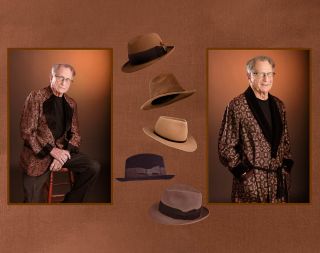Personality
Collecting Art as an Extension of Ourselves
The art we collect reflects us personally.
Updated March 27, 2024 Reviewed by Michelle Quirk
Key points
- The objects collectors collect reflect themselves.
- As such, they are imbued with personal and social meaning to that collector.
- On occasion, a collection of special merit can elevate the collector behind it to a higher societal position.
Michel Jack Chasseuil is one of the most prominent wine collectors in the world. He owns 50,000 bottles of choice vintage French wine stored in a 3,700-square-foot underground cellar protected by armored doors. To entice visitors to his museum, it also includes a tasting room, café, and lobby.
Even though Chasseuil is not a young man (he was born in 1941), he doesn’t want to sell his wine. Nor does he want to drink it. Instead, he wants to let it sit on shelves to be admired. To achieve this, he is starting a museum called the Louvre of Wines. Of course, such a museum requires money to initiate and sustain. Chasseuil thought of this; it is reported that he sold some of his wine worth 500.000 pounds just for this purpose. He will add more to this sum when his dream is completed. Then, he plans to charge $600.00 per person for each tour of his wine cellar, thus further increasing his resources to sustain his museum.

Possessions as Self
Chasseuil must look at this museum as his contribution to posterity. On the other hand, could it be that he can’t part with his wines because they are embedded in his psyche as an image of himself? Without them, could there be no Michel Jack Chasseuil? This is the theory of Wheeler et al. (2020): “Objects carry both personal and social meaning, and ownership or usage increases the linkage between the object and the self. Owned objects are valued more due to their linkage with the (positively viewed) self.”
This line of thinking is based on the endowment effect, a well-known psychological principle—people are likelier to keep what they already own than buy the same object they do not own. Kristina Kolbe (2023) goes further in her recent examination of the social benefits of collecting. The title of her publication, “The Art of (self) Legitimization: How Private Museums Help Their Founders Claim Legitimacy as Elite Actors,” says it all. In a nutshell, not only can collectors assemble objects that have personal and social meaning, but they can also benefit if they have the resources to establish a private museum, thereby enhancing their social status. Since socioeconomic and sociometric status correlate with well-being, this is an important perk to such a collector (Anderson et al., 2012)
Other Psychological Manifestations of Self When Buying Art
Several analyses of collector personalities have revealed specific personality traits related to that collector. For example, Francois Pinault, one of the top 200 art collectors in the world, was found to have a profit motive and liberal leanings (Codignola and Mariani, 2022). Another example relates to cubist art. Those who are attracted to it are more likely to have the ability to decipher objects within these artworks compared to the general population (Muth et al., 2013). An examination of a broader group of collectors indicated that the one constant on a Big Five Personality test was a high score on openness. In combination, these studies suggest that a collector’s personality is reflected in the collectibles that he or she collects.
Conclusion
Here, I explore the intricate relationship between collectors, their collections, and their identities. Michel Jack Chasseuil, a renowned wine collector, is my example, but it could be any collector.
Objects that collectors own become imbued with personal and social meaning to that collector and, thus, intertwine with the collector's unique self-image. Beyond this, that representation can be stamped on a private museum founded by the collector according to her or his preferences. Since such a private museum has status, it can elevate its founder to a cultural elite.
In brief, the art and objects people choose to collect reflect their personalities, interests, and how they wish to be perceived by the world. Their collections can sometimes elevate them to a higher position in society.
References
Wheeler, S. Christian and Christopher J. Bechler (2020). “Objects and self-identity.” Current Opinion in Psychology 39: 6–11.
Kristina Kolbe (2023), The art of (self)legitimization: how private museums help their founders claim legitimacy as elite actors, Socio-Economic Review, 2023; mwad051, https://doi.org/10.1093/ser/mwad051
Codignola, F., Mariani, P. (2022) Investigating preferences in art collecting: the case of the François Pinault Collection. Ital J Mark. 107–133 (2022). https://doi.org/10.1007/s43039-021-00040-x
Muth, C., Pepperell, R., & Carbon, C.-C. (2013). “Give Me Gestalt! Preference for Cubist Artworks Revealing High Detectability of Objects.” Leonardo, 46(5), 488–489. https://doi.org/10.1162/leon_a_00649
Anderson, C., Kraus, M. W., Galinsky, A. D., & Keltner, D. (2012). The Local-Ladder Effect. Psychological Science. https://doi.org/10.1177/0956797611434537


